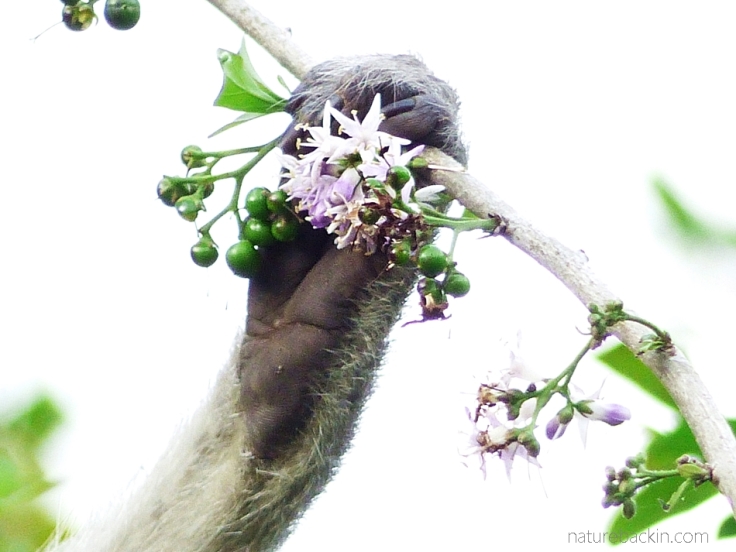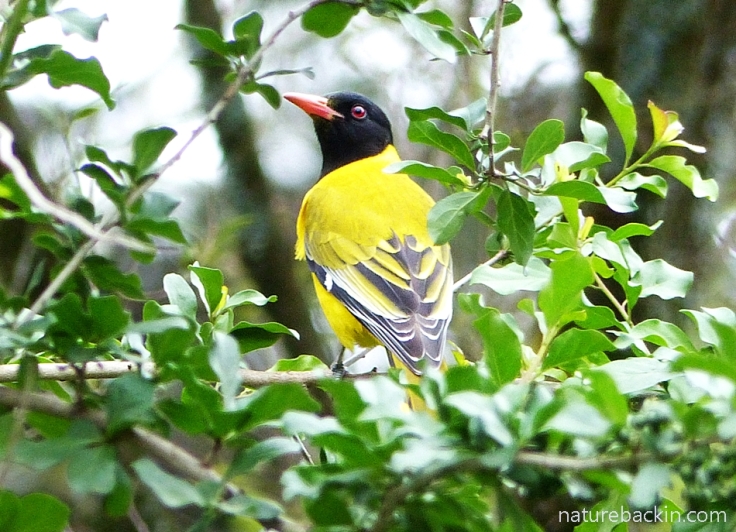Among the first spring flowers are the delicately scented lilac-hued blossoms of the shrubby Puzzle bush.
The Puzzle Bush itself is anything but delicate. It is hardy, coping with drought and all sorts of terrains across much of southern Africa, and its multi-stemmed shape conveys its toughness. Its botanical name Ehretia rigida derives from the name of a German botanical artist Georg D.Ehret (1708-1770), and rigida refers to the rigid, long and arching stems and branches. It can grow as tall as 9 metres and can be classed as a tree despite its name and sometimes bushy shape.

The confusing criss-crossing growth pattern of the multi-stemmed Puzzle Bush gives rise to its common name. In Afrikaans it is called a Deurmekaarbos, meaning it is a bush in a muddle or state of confusion
The rigidity of the stems is such that they can be used to make traditional fishing baskets. The stems can also been used as the turning stick when making fire using friction. The hard wood has been used to make stampers and pestles, and after being freshly cut it has been used to make spear shafts and in Botswana for making bows.

The flowers attract pollinators, and in our garden they are favoured by Vervet Monkeys who also eat the leaves and fruit
The deciduous Puzzle Bush is bare in winter, and in spring it produces fresh leaves at the same time as the flowers that are followed by small green berries that ripen to orange-red. The berries are eaten by birds and by other creatures too. In the wild the leaves are browsed by several species of antelope and on farms they are browsed by livestock. The Puzzle Bush is a most desirable plant for a wildlife-friendly garden.

Held gently but firmly in the hand of a foraging Vervet Monkey, this Puzzle Bush in our garden is already producing green berries that will ripen to a deep orange or red

These Vervet Monkeys are foraging carefully in our Puzzle Bush. When feeding here last week the youngsters also used the sturdy branches for a game, with some of their daring moves and feats of balance reminding me of trapeze artists

Earlier in the season, when the flowers on the Puzzle Bush were still in bud, I managed to sneak a photo of this Vervet Monkey fastidiously selecting new leaves to eat, the tiny leaves seemingly a delicacy to be carefully relished after the long dry winter

Last summer, the Puzzle Bush in turn attracted this Black-headed Oriole seeking insects

Also last summer, a Dark-capped Bulbul suspends itself upside down so it can pick off the last berries that remain in a small cluster on the end of a stem of the Puzzle Bush
 And to end, a photo of a Cape White-eye eating Puzzle Bush berries, edited to have a water-colour pencil effect
And to end, a photo of a Cape White-eye eating Puzzle Bush berries, edited to have a water-colour pencil effect
Sources: Boon, Richard. 2010 (2nd ed.). Pooley’s Trees of Eastern South Africa. Durban: Flora & Fauna; Venter, Fanie and Julye-Ann. 1996. Making the Most of Indigenous Trees. Pretoria: Briza.
Posted by Carol









September 12, 2018 at 8:17 am
It’s lovely to see your burgeoning Spring as we begin the descent into Autumn. Fascinating to read about old traditional uses of the plant and how it still serves your local wildlife; beautiful images as always.
LikeLiked by 1 person
September 13, 2018 at 6:01 am
It is lovely to have the seasons cycle back into spring. Hope your autumn brings much to enjoy despite it being the end of summer!
LikeLiked by 1 person
September 10, 2018 at 9:07 pm
What a marvelous, versatile bush! and quite a beauty as well!
LikeLiked by 1 person
September 13, 2018 at 5:57 am
Yes it’s beauty is an added benefit!
LikeLike
September 9, 2018 at 9:04 am
Funny shrub! I love the picture with the arm of the monkey!! It’s very impressive.
LikeLiked by 1 person
September 7, 2018 at 11:56 am
Such exquisite photos, Carol. And to catch the oriole like that too. Perfect.
LikeLiked by 1 person
September 7, 2018 at 2:05 pm
Thanks so much Tish. The orioles are quite flighty. This one seemed more intent on looking among the leaves rather than taking notice of me.
LikeLiked by 1 person
September 7, 2018 at 2:57 pm
Flighty indeed. I remember trying to get a shot. They’re also good at hiding themselves in the foliage. But no missing their lovely call.
LikeLiked by 1 person
September 8, 2018 at 5:29 am
Yes it is a lovely call.
LikeLiked by 1 person
September 7, 2018 at 7:34 am
It’s great to see your picture story of the many forms of life sustained by this bush. I love your last edited photo too.
LikeLiked by 1 person
September 7, 2018 at 2:02 pm
Thanks Margaret. I like how the edited photo turned out too. Truth be told, I tried that effect to make the photo usable as the focus on the bird was not as sharp as I would have liked 🙂
LikeLiked by 1 person
September 7, 2018 at 4:29 pm
Definitely an experiment to repeat. You must have some quite sophisticated software.
LikeLiked by 1 person
September 8, 2018 at 5:31 am
I just use the remarkable Photoscape. It can be downloaded and used for free ☺
LikeLiked by 1 person
September 9, 2018 at 6:48 am
Thanks! I should look at that.
LikeLiked by 1 person
September 7, 2018 at 5:46 am
Another terrific set of photos. It must be fun watching the monkeys at work, and play. And that black-headed oriole is fantastic.
LikeLiked by 1 person
September 7, 2018 at 1:59 pm
Thanks Graham. I have a very soft spot for monkeys. They are so misunderstood and persecuted. The oriole is a favourite too.
LikeLiked by 1 person
September 6, 2018 at 6:32 pm
Beautiful photos, Carol. The violet flower is delicate and lovely. You must be happy that it is spring!
LikeLiked by 1 person
September 6, 2018 at 6:40 pm
Thanks Eliza. Yes great that it is spring. Yesterday was stinking hot and the weekend is set to be cold with snow forecast for some regions and floods in others! The best is that here it is now raining gently, really lovely. Hope you have a spectacular autumn (Fall?) even if it is the overture to winter.
LikeLike
September 6, 2018 at 6:54 pm
Thank you! While it still feels quite summery, cooler days are ahead. I’m trying not to think about the cold that is awaiting the sun’s retreat to our south.
LikeLiked by 1 person
September 6, 2018 at 7:03 pm
Enjoy what I imagine to be the golden days of late summer.
LikeLiked by 1 person
September 6, 2018 at 6:22 pm
The Puzzle Bush is a tree of life for so many! Its many uses are impressive.
The blooms do remind me of our lilac bushes.
LikeLiked by 1 person
September 6, 2018 at 6:36 pm
Tree of life is a nice way to describe it.
LikeLiked by 1 person